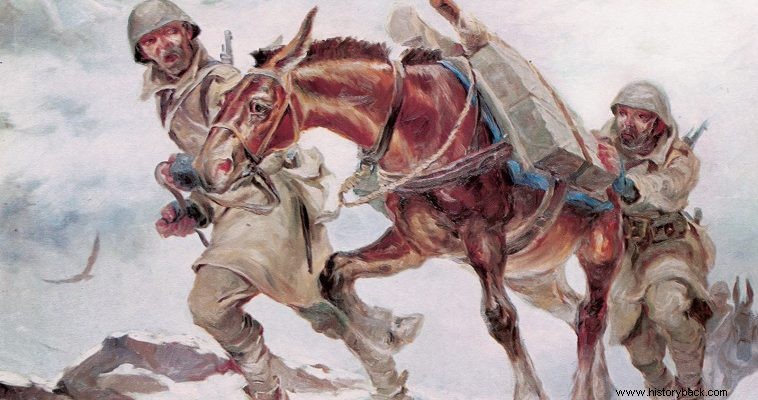
They were the unseen heroes of 1940, most of whom were lost, not only in the battles, but also during the movements in difficult areas. The reason for the "animals of war", as mules and horses are called, which were recruited from Crete, together with the men who left for the war.
Speaking to APE-MBE, the historian and Scientific Associate of the Historical Museum of Crete, Kostis Mamalakis, "the conscription in 1940 was an extremely well-organized conscription, by Greek standards. It was done in stages, and with a system. In our place, Crete, together with the summoning of children to the war which caused a social disturbance, the farmers' animals also began to be gathered. The mules and horses - that is - from all over the countryside.
A recruitment that, in essence, led to emptying the island of animals useful for a person - for his movement and for agricultural work". As Mr. Mamalakis mentioned, the animals that the farmers had in the countryside were registered by the state services and thus separate sheets were sent for their mobilization to their owners.
"Although we do not know exactly how many animals were recruited, the truth is that we draw the conclusion that it was thousands, seeing the photographic material of the movement of the weapons systems. The mules carried cannons and ammunition, and even in difficult conditions," emphasized Mr. Mamalakis, who added that "the transportation of war material in these kinds of wars, which last for many days and are in difficult areas, is still done today only on the backs of people and the backs of animals, if there is no possibility of helicopter transport" thus highlighting the important role they played.
The historian and Scientific Associate of the Historical Museum of Crete called these animals unsung heroes "who did not choose to die, but we chose for them to perish in the snow or even to be eaten in case of hunger". At that time horses and mules corresponded with today's vehicle. They were the means of transport for people and valuable for agricultural work, Mr. Mamalakis explained to APE-MPE, and added that the period that followed in Crete, without the animals, had additional difficulties mainly for the island's farmers.
The "animals of war" left Crete on transport ships and their owners said goodbye to them because they knew they would never see them again. "It gave me a great sensation when I learned from a veterinarian that in Lasithi, one of the animals that had been recruited, a horse, was returned to its owner. This is a rare case, which has an emotional charge," said Mr. Mamalakis, who added that "while abroad there are monuments to war animals, we have not built a single one".
APE-ME
